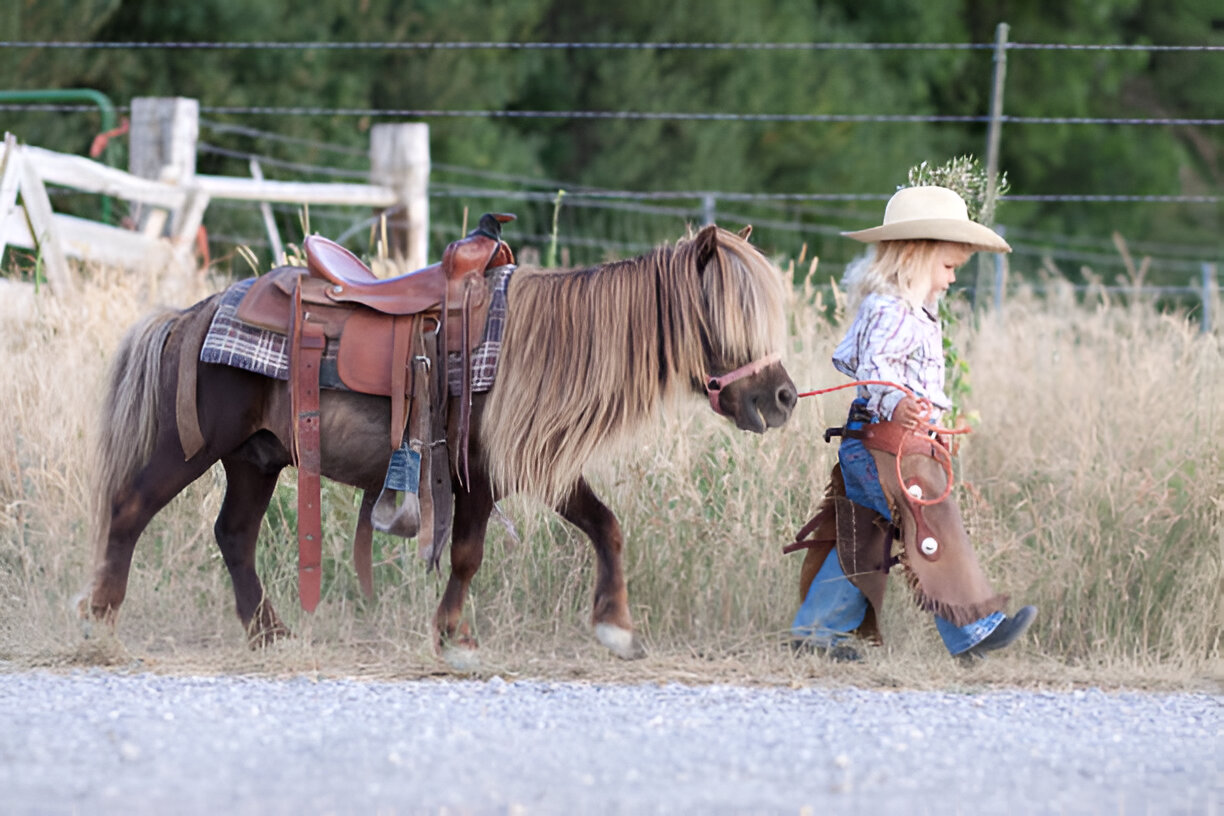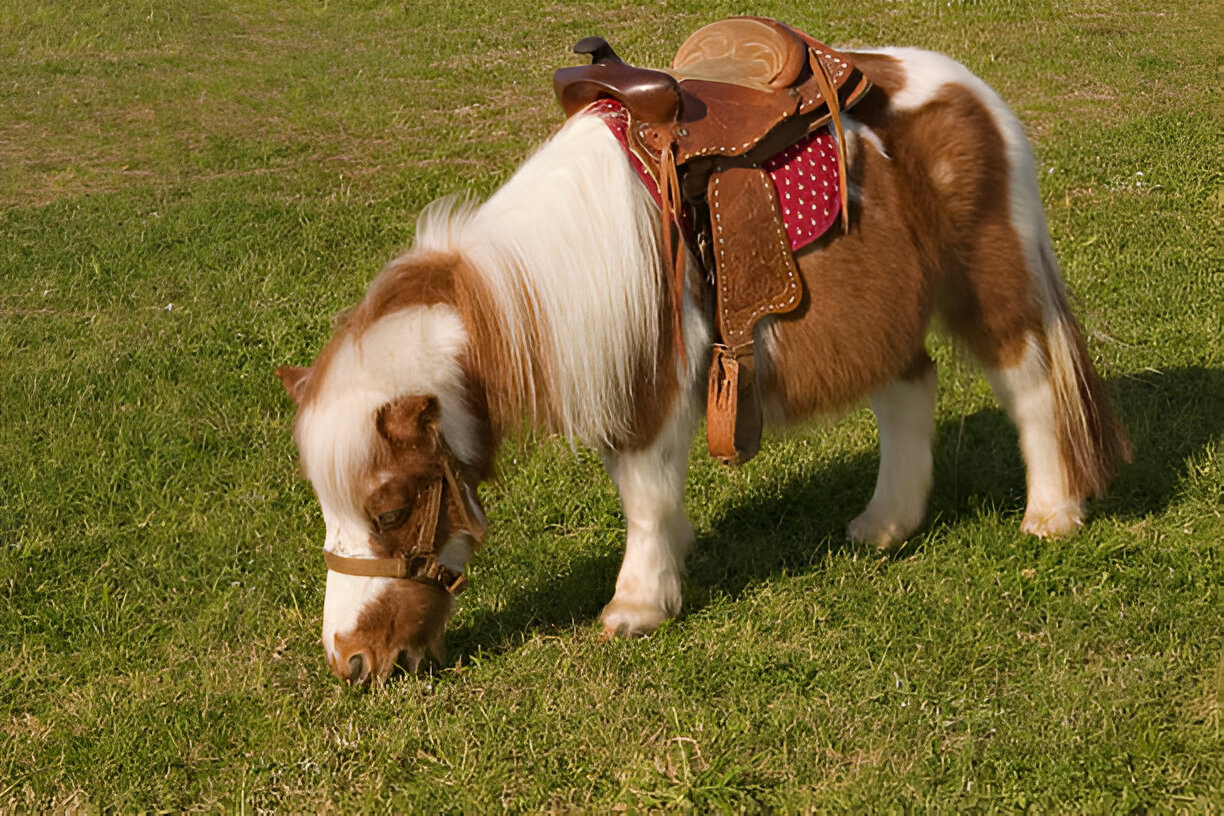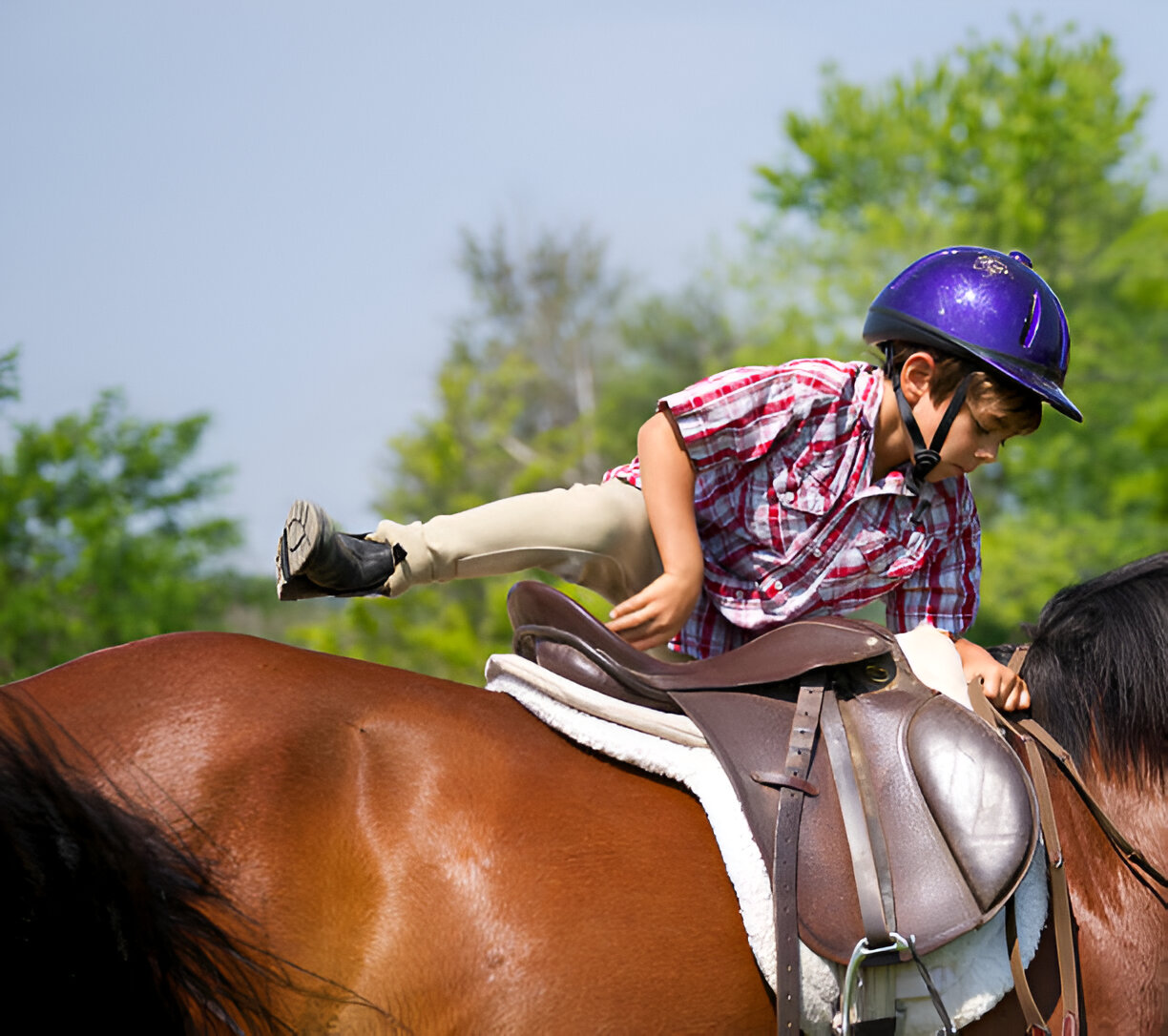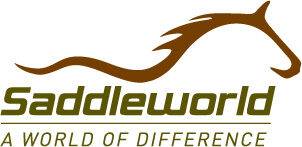
Pony Saddle Essentials: Your Complete Guide to Types, Fit, and Safety
There’s something magical about the bond between a child and their pony. It’s a partnership built on trust, shared adventures, and countless hours spent together. But like any great partnership, it needs the right equipment to thrive. At the heart of this equipment lies the pony saddle – a piece of gear far more crucial than many realize. It’s not just a smaller version of a horse saddle; it’s specifically designed for the unique conformation of ponies and the needs of smaller, often less experienced, riders.
When it comes to the right sort of a saddle for a pony, it does not pertain to the fancies or brands. It talks about security, comfortability (that of pony as well as rider) and getting the correct riding posture developed from the very first day. An unfitting or unsuited saddle creates added discomfort, problems in behavior for the pony, and in some cases, it can cause hindrances to a little rider’s growth and confidence. Consider it on the same level as finding the right pair of shoes to use for running: a pair that does not fit well will cause pain while running, thereby discouraging anyone from pursuing that particular activity. This guide will enlighten you in every aspect of saddle selection, fitting, and maintenance of a perfect pony saddle. With it, you are assured of many happy and safe hours in the saddle.
The Importance of a Proper Pony Saddle
So what all the fuss about a *pony* saddle? Can’t just any small horse saddle do? The short answer is usually no. Ponies frequently have different back shapes than horses, generally having wider, flatter backs, with sometimes less prominent withers. A horse saddle will likely pinch, rock, bridge (only touch in front and back), and slide around, giving the pony a sore back, which can lead to long-term back problems.

Advantages of pony saddles for the rider, especially children:
Suitable Dimensions: The size of seat, flap length, and stirrup placement are reduced for the smaller body to help the child sit in balance and secure posture.
Safety Features: A lot of saddles present variations that enhance the safety of beginners or very young children, such as grab straps or deep seats.
Lightness: These saddles are light, giving children (and adults) better control over the weight and reducing the load on the pony’s back.
Confidence Builder: Secure and comfy, a saddle supports the young rider’s learning and enjoyment of riding rather than evoking feelings of insecurity or instability.
Well, a good pony saddle is for the health of the pony, and thus the saddle is for the development of the rider-in fact, it’s probably the first step to a successful equestrian experience.
Understanding Pony Saddle Types
Pony saddles are characterized by several different saddle types, similar to those of horse saddles. These types are really important in narrowing down ponies based on how the ponies will be ridden.
General Purpose (GP) Pony Saddles
Close to what the name indicates, all-round saddles are used for a spot of everything – flatwork, hacking, small jumps, and general riding lessons. Moderate seat depth and a moderate flap configuration that is neither too straight (such as for dressage) nor too forward (such as for jumping) make this saddle the perfect choice for a beginner, for pony club activities, or for the rider who enjoys many disciplines without specializing all that much. The GP pony saddle is considered by many to be the best all-around saddle.
Leadline Pony Saddles
Saddles designed for the young rider who is mostly led on a pony lay emphasis on safety and security. They are very deep in seat to help keep the child centered; have a prominent pommel (front) and cantle (back); have a built-in grab handle or strap system; and sometimes resemble a bareback pad with extra security features.
The bottom line is to create a secure riding platform for the child’s initial riding experiences.
Western Pony Saddles
A western pony saddle is just like its full-sized counterparts in term of design: it provides comfort in work and maximum safety.
Features include:
- Deep seat.
- High horn at the front (it is smaller or has been eliminated in pony versions for safety reasons).
- Wide fenders instead of the normal English stirrup leathers.
- Quite a heavier, sturdier construction compared to the English pony saddles.
- Wonderful for trail rides as well as ranch work (though on smaller scale!) or if a child is learning the Western discipline, ensure that the weight is doable for the pony.
English Pony Saddles (Discipline Specific)
Saddle for Young Pony Riders:
The Pony Jump Saddle: A very forward flap designed to position the legs with shorter stirrups. The seat is somewhat flatter to hold the rider securely and correctly in place over fences.
Pony Dressage Saddle: Available, but not so common- has the straighter flap for longer legs and deeper seat for the right dressage position. This saddle is for the older kids who will pursue dressage as a serious activity.
Synthetic vs. Leather Pony Saddles
The material debate exists in the pony world too! Both have pros and cons:
| Feature | Synthetic Pony Saddles | Leather Pony Saddles |
|---|---|---|
| Weight | Generally lighter | Typically heavier |
| Maintenance | Easy to clean (wipe down) | Requires regular cleaning and conditioning |
| Durability | Can be very durable, resistant to weather | Very durable if well-cared for, can last decades |
| Cost | Often more affordable initially | Usually more expensive |
| Break-in Period | Minimal to none | Requires breaking in |
| Appearance | Modern look, various colors available | Traditional, classic look |
Synthetic saddles, such as those manufactured by Wintec, are exceedingly popular in children’s riding gear due to their easy maintenance, lightweight design, and relatively low price. Quality leather saddles remain a time-tested classic, appreciated for their durability and traditional feel.
Choosing the Right Size: Fitting the Pony Saddle
It is likely the most important consideration when choosing a saddle for a pony. No pony is without discomfort, if not injury, from a poorly fitting saddle. Fit assessment is about pony and rider.
Measuring the Pony
Pony conformation varies widely. Key areas to assess include:
- Withers: Are they high and narrow or wide low (‘mutton withered’)? That affects the required gullet width and tree shape.
- Back Shape: Is the back flat or slightly dipped (swayback)or roached? Saddle panels need to conform evenly.
- Back Length: The saddle must not extend past the last rib of the pony onto the sensitive loin area. This also makes pony saddles generally shorter.
It’s really important to check saddle fit by putting it on the horse’s back – first without a pad – although templates and measuring tools help: Productive Practice is everything!
Measuring the Rider (Child)

It is essential to secure a seat properly fitting for the child in question; to be undersized is a torque on the child in a sharply abusive way, while an oversized seat affords no security at all. Guidelines, while presenting general directions depending on the child’s age or clothing size, actually have to be put into equipment; the correct measurement should leave one hand’s width space between the rider’s seat and the cantle.
Key Fitting Points (for the Pony)
The pony/saddle fit-upon assessment should contain:
- Wither Clearance: You should be able to fit 2-4 fingers in a vertical direction between the withers of the pony and the pommel/gullet of the saddle underside.
- Gullet Width: The entire channel down the middle of the saddle must be sufficiently wide to clear completely the pony’s spine and all connective tissue along the length of the saddle. There should be no contact with the spine.
- Panel Contact: The saddle panels (the cushioned parts underneath) should rest evenly along the pony’s back muscles on either side of the spine, distributing weight uniformly. There should be no bridging or pressure points.
- Saddle Balance: The deepest point of the seat shall be level when the saddle has been properly positioned and girthed up. It should show no forward or backward tilt.
- Saddle Length: As previously discussed, the saddle panels must not extend beyond the last rib.
Shoulder Freedom: The tree point of the saddle should rest behind the shoulder blades of the pony to allow free movement.
Common Fitting Mistakes to Avoid:
- Choosing a saddle only on the basis of seat size for the rider.
- Trying to pad out an ill-fitted saddle (which could also make things worse).
- Assuming that what fit one pony will fit another.
- Forgetting that ponies (and children) change shape – fit needs constant re-evaluation.
- The saddle is too far forward over the withers and shoulders.
If in doubt, always consult a qualified professional saddle fitter. Their expertise is invaluable.
Essential Pony Saddle Accessories
The saddle doesn’t function in absolute isolation; there are a few accessories one should have:
- Girth (English) or Cinch (Western): This secures the saddle in place. It should be of the correct length and should be the most comfortable for the pony (consider leathers, synthetics, fleece-lined, and elasticated materials).
- Stirrup Leathers or Fenders: These hold the stirrups to the saddle. For children’s English saddles, make sure that leathers are not too thick or wide for the small buckles and keepers. Safety leathers should come in handy; these release under pressure.
- Stirrup Irons: Lightweight pony-sized stirrups are advisable. Safety stirrups (e.g., peacock stirrups with a rubber band or hinged designs) are highly recommended for children, as they facilitate easy release of the foot in case of a fall. Correct size for the child’s boot should be ensured (about half an inch clearance on either side).
- Saddle Pad or Numnah: Situated between the saddle and the pony’s back, it absorbs sweat, gives minor cushioning, and keeps the saddle clean. Should correspond to the saddle shape and should not interfere with fit. Pads designed for pony saddles are the best choice. Comfortable, but never forget that a pad cannot compensate for fundamentally poor saddle fit.
- Crupper (optional): A strap that goes from the back of the saddle around the base of the pony’s tail. Sometimes when trying to keep the saddle from sliding forward on round ponies lacking prominent withers, a crupper is used. It should be fitted right, lest it cause discomfort.
Caring for Your Pony Saddle
It prolongs the life of your saddle and maintains its safety.
-
Leather saddles:
- Wipe off the dirt and sweat after each ride using a damp cloth.
- Apply saddle soap using the product instructions at regular intervals.
- Condition with a good leather conditioner to keep itsoft but not too often (as the leather becomes weak).
- Store on a proper saddle rack away from extreme heat or dampness.
-
Synthetic Saddles:
- A damp cloth is mostly what they need for a clean. Tough and obstinate dirt may often wash out with just water and mild soap.
- Follow the manufacturer’s instruction, however, for specific care directions. Maintain using an appropriate saddle rack.
- Periodic Check-ups: Checking the sewing, billets (girth straps), stirrup bars, leather/synthetic material for wear, crack, or damage should be done notwithstanding the material. Prompt repair is recommended so as not to fall victim to an extensive problem.
Pony Saddles for Young Riders: Safety First!
You are involved in the saddle selection specifically for a child; safety and confidence-building aspects must take center stage.
- Safety: A saddle should have a deep seat, maybe a suede seat patch for grip, and a properly placed knee roll or block for position support.
- Grab Strap: A strap or handle set at the front of the saddle gives the child something secure to hold onto when feeling unbalanced; this is common on leadline and beginner pony saddles.
- Lightweight: Easy for kids to carry and tack up (with supervision) and less weight for the pony. Synthetic saddles are usually the best for this.
- Proper Fit for the Child: This guarantees that he can sit properly and develop good habits from the start.
- Safety Stirrups: Always recommended for children to lessen their chances of being dragged in the event of a fall. These are strongly recommended.
Pony Saddle FAQs
Q1: How is a pony saddle different from a saddle for a small horse?
Pony: Pony saddles are designed for ponies that typically have wider and flatter backs and shorter length dimensions. Generally, pony saddles differ in tree shapes and panel designs, smaller-sized seats, and shorter flaps when compared to saddles for horses. They are also proportionately smaller in their seat areas and shorter flap lengths for smaller riders.
Q2: Can an adult ride in a pony saddle?
With the exception of adult children or perhaps a very small, light adult, the answer is generally no. The seat size would likely be too small for most adults, and the saddle isn’t designed to distribute an adult’s weight correctly on a pony’s back.
Q3: How often must I check the fit of my pony saddle?
Frequently! Age, fitness level, and season will all change a pony’s shape. Children grow so fast too. Wise is to check the fit every few months, or immediately if there are any signs of discomfort in the pony (e.g., sensitive when being groomed; shies away from the saddle) or changes in the position of the rider.
Q4: Are secondhand pony saddles good to buy?
They can be, as long as they are in good condition and fit both pony and rider equally well. Check a used saddle very carefully for damage, especially in the tree (look for twists or breaks), stitching, and billets. Worth having a professional check used saddle before buy.
Q5: Is there a specific pony saddle pad needed?
Yes, it is advisable to use saddle pads designed especially for pony saddles. They are shaped and sized appropriately to fit underneath the smaller saddle correctly, without bunching or extending too far.
Warnings and Safety Considerations
- Professionalism is Important Fitting: This manual is good, but nothing matches having a proper fit assessment done by a saddle fitter. Suitable fit is a critical welfare issue marker as well. These Checks Should Be Made Regularly: Do not ride in the saddle if the stitches are all cut, cracked places in the leather or other materials are present, or bits are damaged. An item breakdown can inflict quite a dangerous accident, in fact.
- Ensure Firm Girth: Always check that the girth is fairly tight but not too tight (fingers should slide in between the girth and the pony). Make a habit of checking this after mounting and walking a little distance, as saddles tend to settle.Correct Mount/Dismount: Teacher child good mount/dismount techniques preferably with use of a mounting block to prevent any undue strain on the pony’s back and the saddle tree.
- Never Leave Children Alone: monitor at least beginners under the right supervision at a time when a child handles or rides a pony.
Bringing It All Together
Selecting the right saddle is an odyssey in itself as it deals with the anatomy of the pony, the needs of the rider, and the intended use for which the saddle was designed. From general-purpose saddles, which may serve many disciplines, to that lead hat on secure saddles; from easy-looking maintenance with synthetic leather to the ultimate in ponying-On-One-Horse-Back classics. Every pony saddle must fit well; therefore, ensure you spend the requisite hours checking the proper fit for you and seeking professional help. Safety stirrups and the correct girth measurements offer the finishing touches, securing comfort and safety too.

Emphasis on well-fitting, appropriate, and well-looked-after pony saddles really sets the stage for a safe, fun, and successful riding experience for both child and pony. The investment alone pays dividends with happy trails and smiles. For a broad selection of qualitatively made saddles that would suit many needs, including pony-related options, collections like those at Saddleworld Caboolture could be a good idea.
